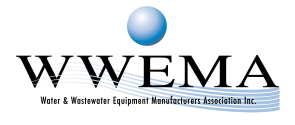Understanding Buy America, Buy American & AIS for the Water Industry | WWD Weekly Digest
Thursday, September 2, 2021
As Congress debates infrastructure funding and the future of U.S. infrastructure, it is important to understand domestic rules that impact buying and specifying for projects with federal funding from those proposed bills. Three pieces of legislation of focus in this regard are Buy American (1933), Buy America (1982) and the American Iron & Steel Act also known as AIS (2014).
Vanessa Leiby is the executive director of the Water & Wastewater Equipment Manufacturers Association, who has witnessed these impacts from members of the WWEMA organization. She explains what these rules are and how they differ and also communicates the impact it has on manufacturers. Those impacts then have an indirect impact on the water and wastewater projects throughout the industry, particularly if they are funded through federal resources.
- Introduction: (0:00)
- What are the American Iron & Steel Act and Buy America: (1:09)
- Buy American language in the Infrastructure Investment and Jobs Act of 2021: (6:36)
- The impact of AIS on water and wastewater manufacturers: (8:04)
- The impact of Buy American language expansion for water and wastewater: (12:32)
- The indirect impact of this legislation has on utilities: (16:41)
- What do we know for certain about the Buy American expansion right now?: (19:45)
- How funding relates to Buy America, Buy American and AIS: (23:00)
- Outro: (27:28)
Water Infrastructure & Capitol Hill With WWEMA | WWD Weekly Digest
Thursday, June 24, 2021
As the second quarter of 2021 comes to a close, a check-in on Congress, the direction of legislation, funding, bills and regulatory efforts could set the stage for the remainder of 2021 as the U.S. prepares to enter another election cycle.
Vanessa Leiby is the executive director for the Water & Wastewater Equipment Manufacturers Association. Leiby has decades of experience working with legislators in Washington on water issues from both the utility and manufacturer perspectives and in this interview, she shares some of her insights on trends on Capitol Hill. She discusses the barriers for getting bills passed, how political tactics and strategy can muddy the waters to push things through, and what her top three takeaways are from following water issues in Washington in the first half of 2021.
- Intro: (0:00)
- What’s going on in Washington, D.C. regarding water?: (0:39)
- The primary talking points around water infrastructure in the U.S.: (3:02)
- What are the most promising bills out there right now?: (8:50)
- Barriers to getting water bills passed: (13:30)
- The nuance, strategy and tactics of getting a bill passed: (16:24)
- Water’s place on the Hill and regulations versus legislation: (18:40)
- Three key takeaways about water on Capitol Hill: (21:51)
- Outro: (24:40)
Infrastructure Technology
Technological Solutions for America’s Water and Wastewater Infrastructure
Thursday, March 18, 2021
Virtual Briefing
Resilient and sustainable water and wastewater infrastructure is essential to securing safe drinking water, public health, a clean environment, and American jobs. However, water and wastewater sectors face severe challenges in meeting these needs as a result of aging assets, funding shortfalls, operational and staffing difficulties, and the impacts of the COVID-19 pandemic. As Congress considers additional funding to help meet these challenges, it should ensure that we build back better by incentivizing the adoption of new, sustainable water technology. Smart water technologies present opportunities to leapfrog decades of underinvestment in the way water infrastructure is designed, constructed, and operated, to ensure increased efficiency, affordability, and public health benefits.
Moderated by Peter Grevatt of the Water Research Foundation and George Hawkins of Moonshot Missions, this briefing convened congressional policymakers, water and wastewater infrastructure thought leaders, and key industry stakeholders to explore new policy and technology solutions to this growing crisis.

